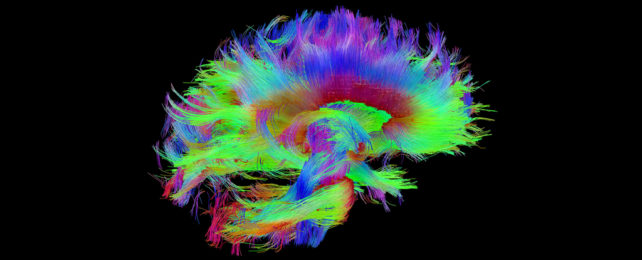Scientists have created the most detailed map yet of the neural highways connecting our gray matter's memory bank – the hippocampus – with the rest of the brain, revealing unexpected patterns of connections between regions.
"We were surprised to find fewer connections between the hippocampus and frontal cortical areas and more connections with early visual processing areas than we expected to see," says University of Sydney psychologist Marshall Dalton.
While there's still a lot of debate over the precise role of the hippocampus in memory, neurologists are confident it plays a key part in constructing memory and integrating it with our perception to allow us to make decisions about the future.
A better understanding of how the hippocampus works in context with other areas of the brain could one day help us tackle memory decline.
Using a new imaging technique called diffusion weighted imaging – a type of MRI scan that uses diffusion of water molecules through tissues to generate contrast – Dalton and colleagues created a high-resolution map of the connections between the hippocampus and cerebral cortex from the brains of seven adult females under 35 years old.
"We have now developed a tailored method that allows us to confirm where within the hippocampus different cortical areas are connecting. And that hasn't been done before in a living human brain," says Dalton.
"What we've done is take a much more detailed look at the white matter pathways, which are essentially the highways of communication between different areas of the brain."
The researchers found the hippocampus has different messaging networks, each linked to specific areas of the cortex. Our previous knowledge of these connections stems from dissections of primate brains, and the resulting brain map largely aligned with these.
But the researchers discovered a much higher level of connections in the visual processing area of the human brain and fewer in the frontal cortical areas.
The post-mortem analysis carried out on non-human primates can detect finer details down to a cellular level, so it may just be that we haven't been able to resolve all those connections in humans yet.
"Or it could be that the human hippocampus really does have a smaller number of connections with frontal areas than we expect and greater connectivity with visual areas of the brain," Dalton explains.
"This makes sense considering the hippocampus plays an important role not only in memory but also imagination and our ability to construct mental images in our mind's eye."
Other recent studies have also found associations between these areas of the brain. The team is curious to see if similar patterns are consistent across humans of different demographics.
"As the neocortex expanded, perhaps humans evolved different patterns of connectivity to facilitate human-specific memory and visualization functions which, in turn, may underpin human creativity," Dalton continues.
"It's a bit of a puzzle – we just don't know. But we love puzzles and will keep investigating."
This research was published in eLife.
